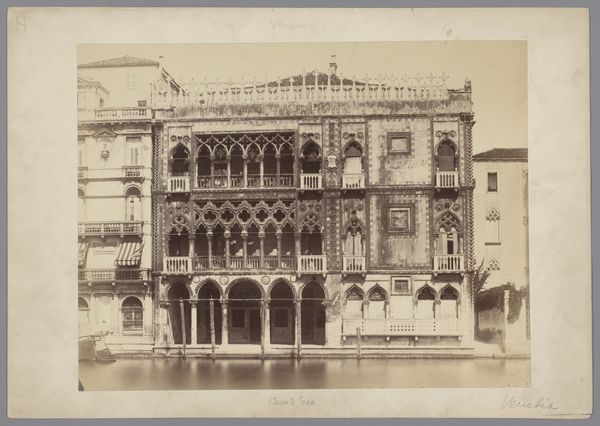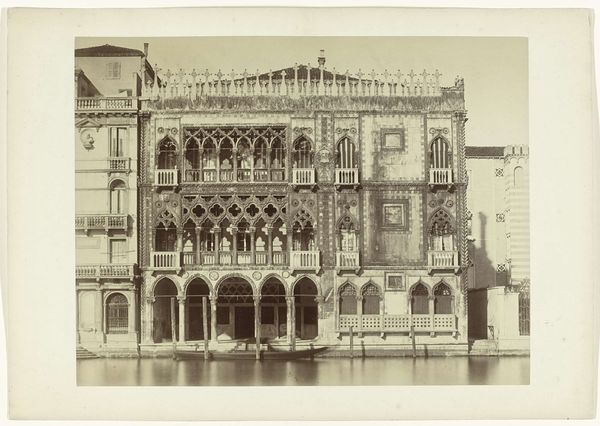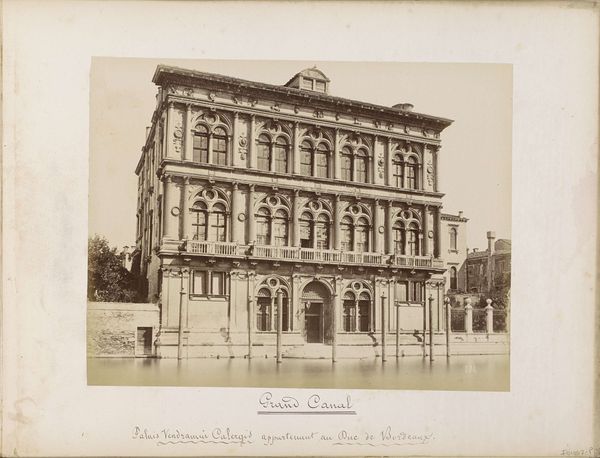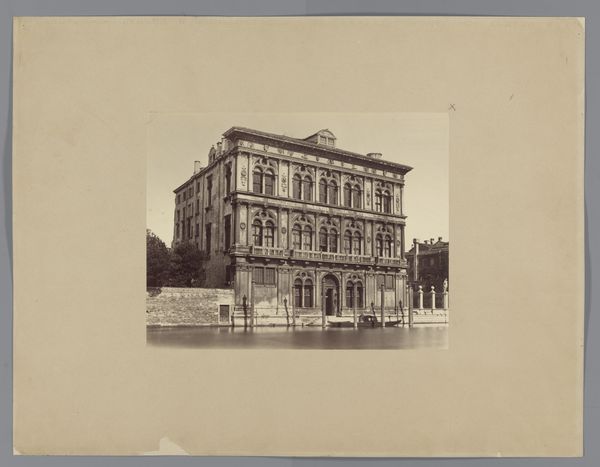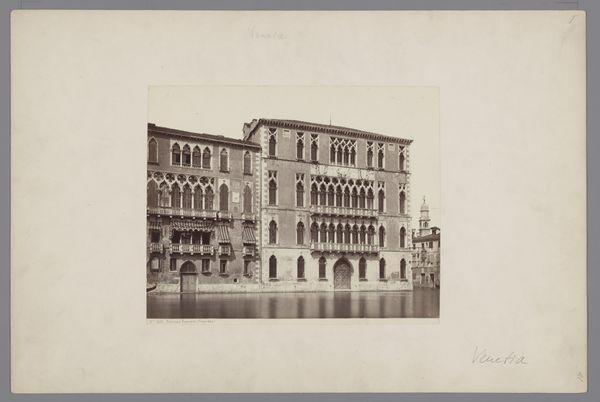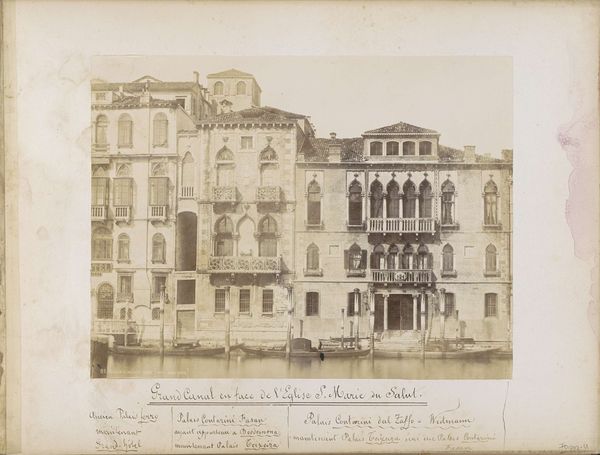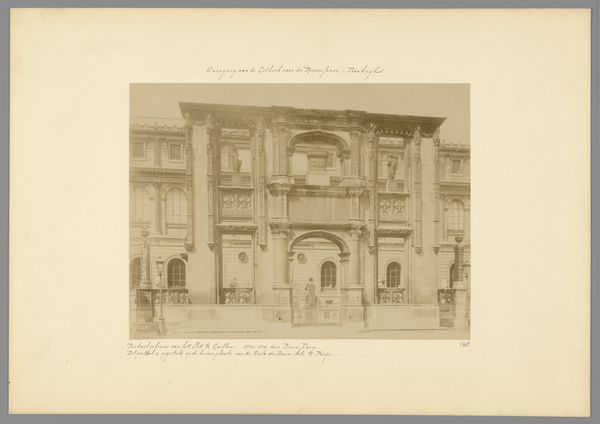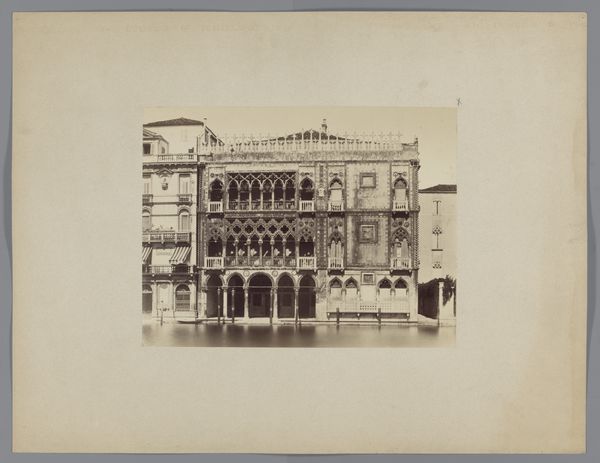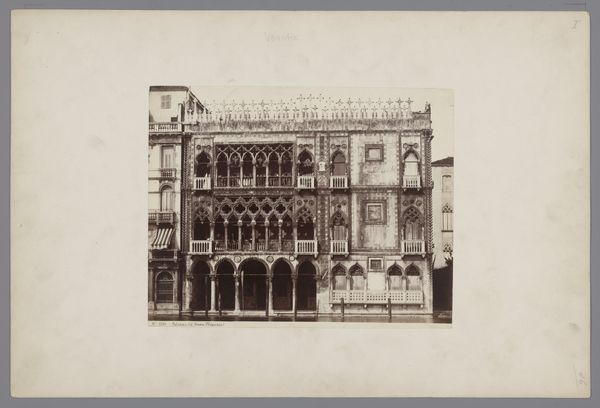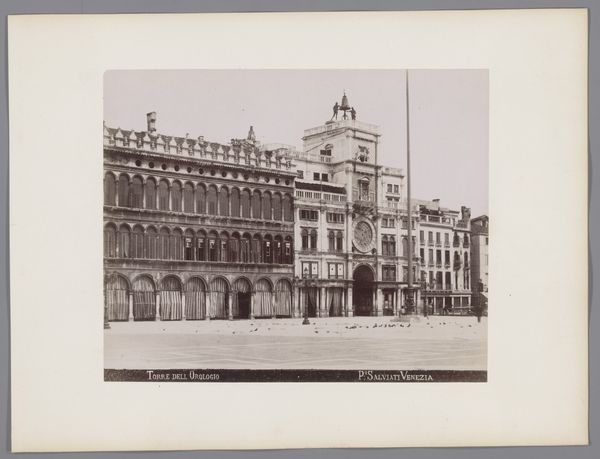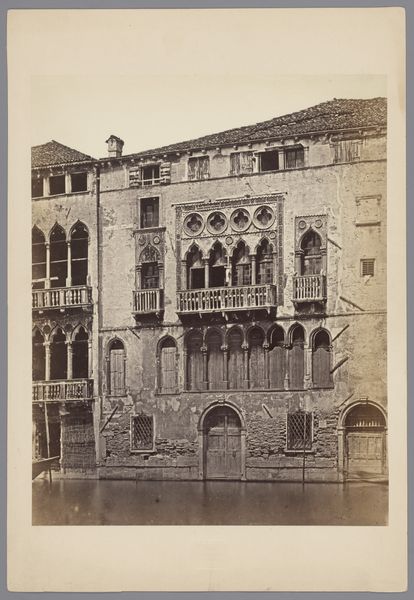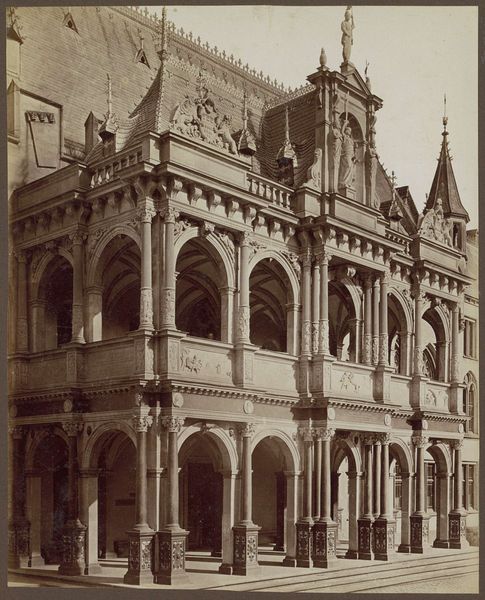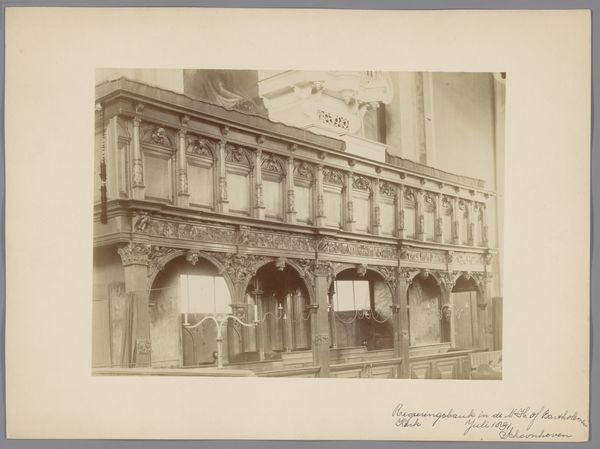
Dimensions: height 197 mm, width 258 mm
Copyright: Rijks Museum: Open Domain
Curator: This albumen print captures the Ca' d'Oro on the Grand Canal in Venice. The work, attributed to Carlo Ponti, dates from sometime between 1860 and 1881, a period when Venice was both romanticized and undergoing significant transformation. Editor: It’s arresting. The detail achieved in the stonework through this process is wonderful, but it evokes such a melancholic stillness. The reflections in the canal only enhance the sense of a suspended, almost dreamlike, moment. Curator: Indeed. Ponti was working during a time when Venice, after centuries as an independent republic, was now under Austrian rule and increasingly becoming a subject of nostalgic fascination for Western audiences. Photography played a critical role in shaping these perceptions, presenting idealized, untroubled visions of the city. Editor: Looking closely at the palace facade, the texture feels particularly emphasized; you can almost feel the grit of the stone. How would a typical tourist during this period encounter an image like this and understand how it’s crafted? Curator: This image could be acquired as a souvenir. This kind of romantic cityscape became a marker of cultural capital, almost shorthand for the Grand Tour. Its presence in the domestic space broadcasted to any visitor the owner’s engagement with the past and with certain elite cultural traditions. Editor: I see your point; but from a materials perspective, think of the labor. We have glass plates, darkroom techniques, and the chemical processes involved in producing an albumen print which demand both expertise and access to specific supplies. Each of these things affected who could become a producer and a consumer of these romantic views. Curator: Of course. Ponti had established a successful photographic studio. This wasn't just an aesthetic pursuit; it was an industrial operation feeding a market. The choice of subject matter, the emphasis on the picturesque and timeless—it all catered to certain consumer desires, and those desires were themselves being shaped by the availability of these images. Editor: That is what I call "commodity-fetishism", turning photographies into items. Overall, it’s hard not to be drawn into the almost painterly effect that Ponti has created using photographic techniques. A tangible product manufactured to inspire longing. Curator: Precisely. By studying the image and understanding the cultural and social forces behind its production and reception, we gain insights into the complex relationship between art, politics, and society in nineteenth-century Venice. Editor: And, by thinking of how Ponti might have set up his studio, mixed his chemicals, and navigated the ethical complications that came along with commercial production, we get a deeper appreciation for this moment in Venice and the technologies shaping its portrayal.
Comments
No comments
Be the first to comment and join the conversation on the ultimate creative platform.
